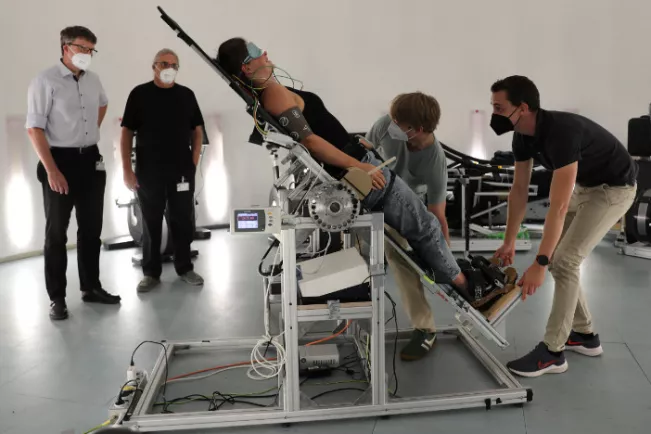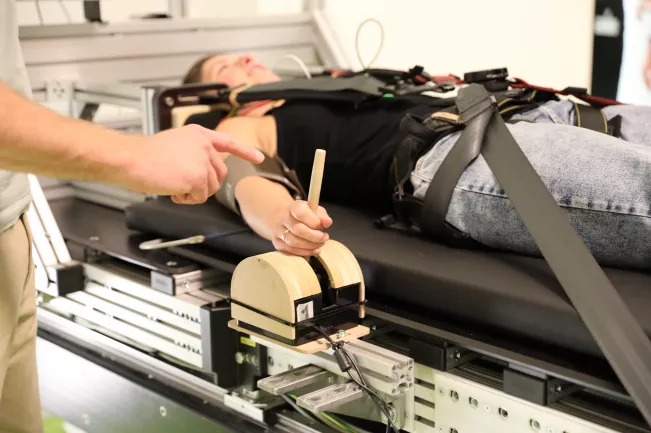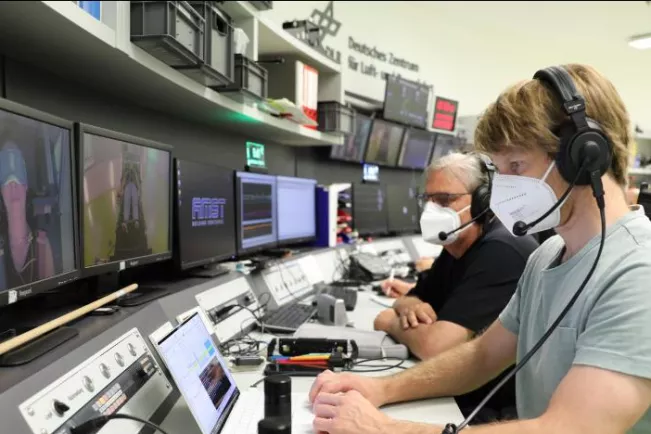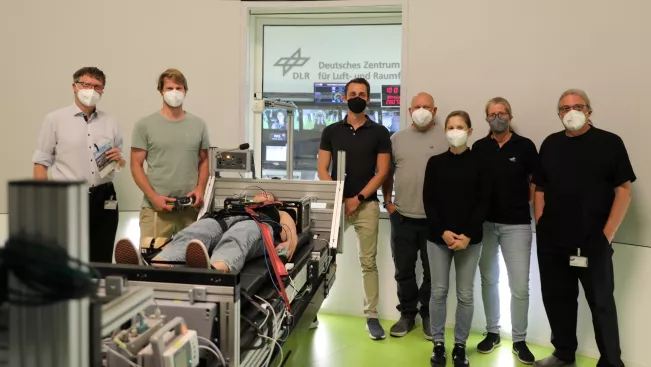Department of Computer Science
Where is up and where is down?


In the study PUG 4, the team around Prof. Dr Rainer Herpers, Sandra Felsner and Dr Nils Bury, (all from Bonn-Rhein-Sieg University of Applied Sciences, Department of Computer Science), in cooperation with Prof. Dr Laurence Harris, Prof. Dr. Michael Jenkin and Prof Dr. Robert Allison from York University as well as colleagues from York University as well as colleagues from German Aerospace Center (DLR) in Cologne, are trying to determine how people find their orientation in space without the availability of visual features. The test persons are blindfolded. Under medical supervision, they are fixed on a tilt table. The tilt table is movable and is set to angles of 0° and 45°. The participant does not know at which angle the tilt table has been aligned. There is a movable wooden pin on the right side of the tilt table. The test person has to align it in such a way that a ball would fall down. Subsequently, the participants lie on a centrifuge, which rotates with different accelerations between 0g and 1g. The rotation influences the perceived direction of gravity. As in the previous condition, the participants have to align the joystick in such a way a ball would fall down.

In this study, it is to be investigated in men and women in which way and in which intensity the perception or orientation in space is changed by different gravitational stimuli. These gravitational stimuli are elicited with the help of the short-arm centrifuge on which the experiments are conducted. The results so far show that there are differences in perception between women and men.

Herpers: "The knowledge gathered through the experiments should help us predict how the perception of "upright" (or perceptual upright, PU) as well as the perception of "vertical" (or perceptual vertical) changes in men and women in situations where gravity is not a reliable source for orientation perception. This is the case, for example, on the moon, where gravity has a lower strength than on Earth (about 0,16 g). Although research in this area has been active for years, human orientation perception has not yet fully decoded and predictable, particulay in special environments such as underwater, on the moon or in weightlessness. Many of the mistakes that happen when working in space are consequences of perceptual misinterpretations, some of which are related to the questions we are investigating here. The aim of our project is therefore to make perception predictable and thus to be able to optimally support female and male persons (pilots, astronauts, divers) in the perception of their environment, in each case depending on the particular conditions of their environment and their gender. The results of our research project should help us to develop a better understanding of how people (men and women) decide where 'up' is and where 'vertical' is."
This centriguge study is supported by ESA (Grant No. ESA-CORA-GBF-RHerpers-ROD2 2021-09-09) and York University, Toronto, Canada in the VISTA programme.
Kontakt

Rainer Herpers
Scientific Director of the Graduate Institute, Professor for Computer Vision, Computer Graphics, Multimedia Applications , Director of the Institute for Visual Computing, Director of the Department of Informatics and Data Science at PK NRW
Research fields
Location
Sankt Augustin
Room
F 427
Address
Grantham-Allee 20
53757, Sankt Augustin
Telephone
+49 2241 865 217Location
Sankt Augustin
Room
C 275
Address
Grantham-Allee 20
53757, Sankt Augustin
Telephone
+49 2241 865 217
Kira Wazinski
Marketing and Communications for the Department of Computer Science
Location
Sankt Augustin
Room
C 157
Address
Grantham-Allee 20
53757, Sankt Augustin
Telephone
+49 2241 865 202